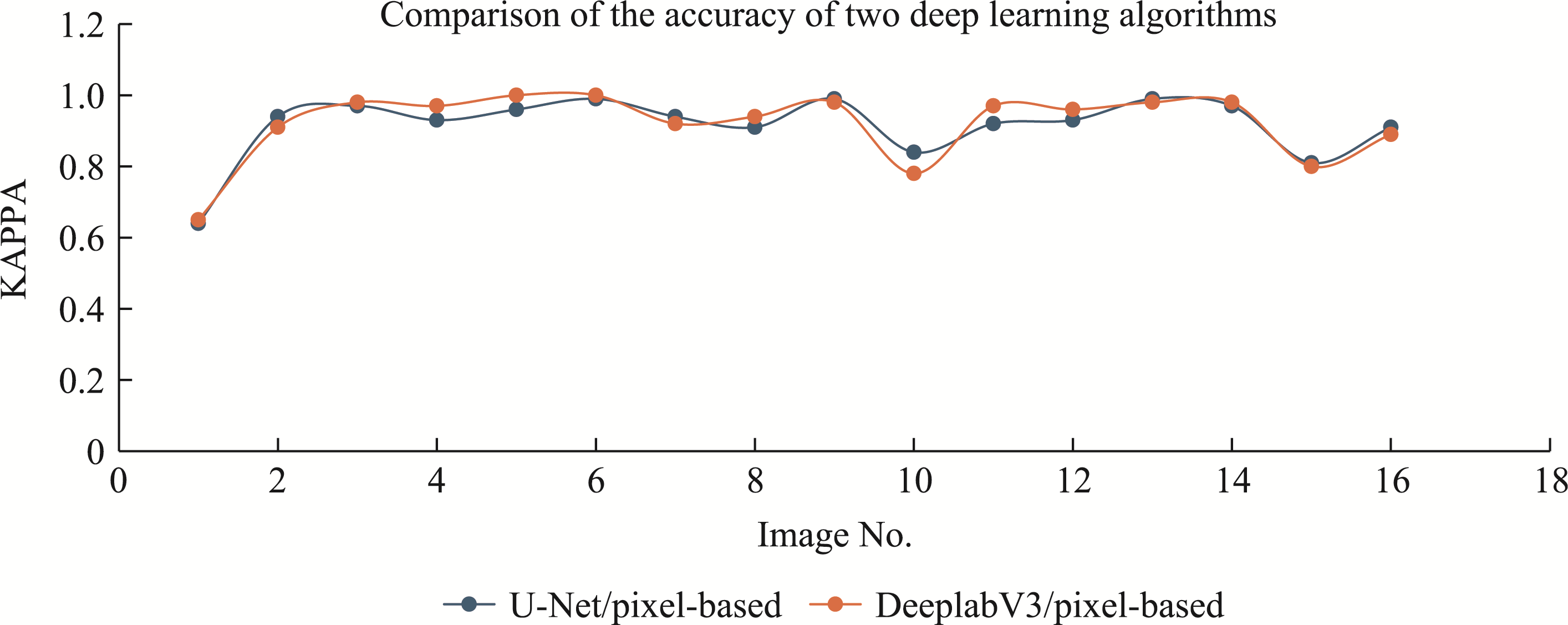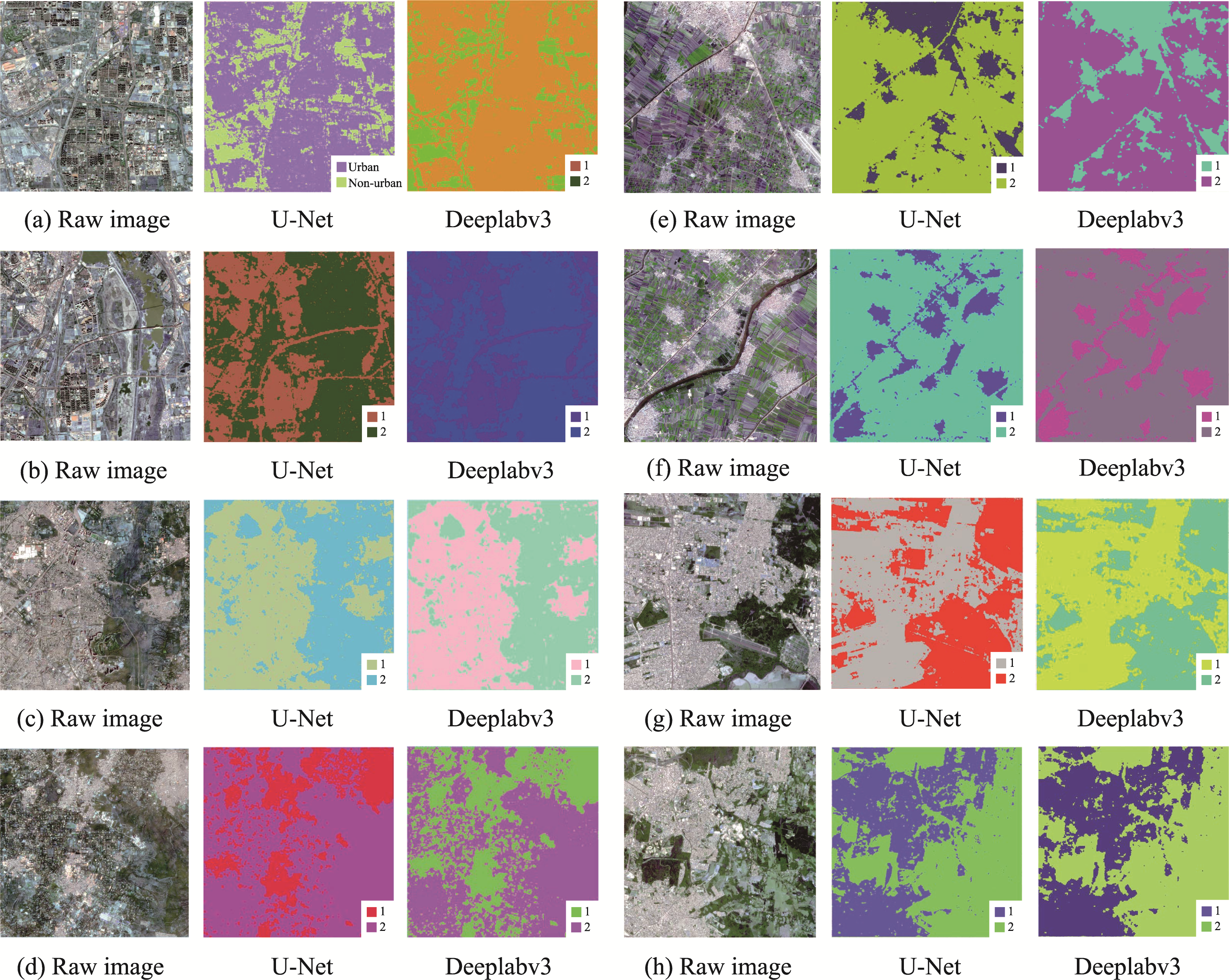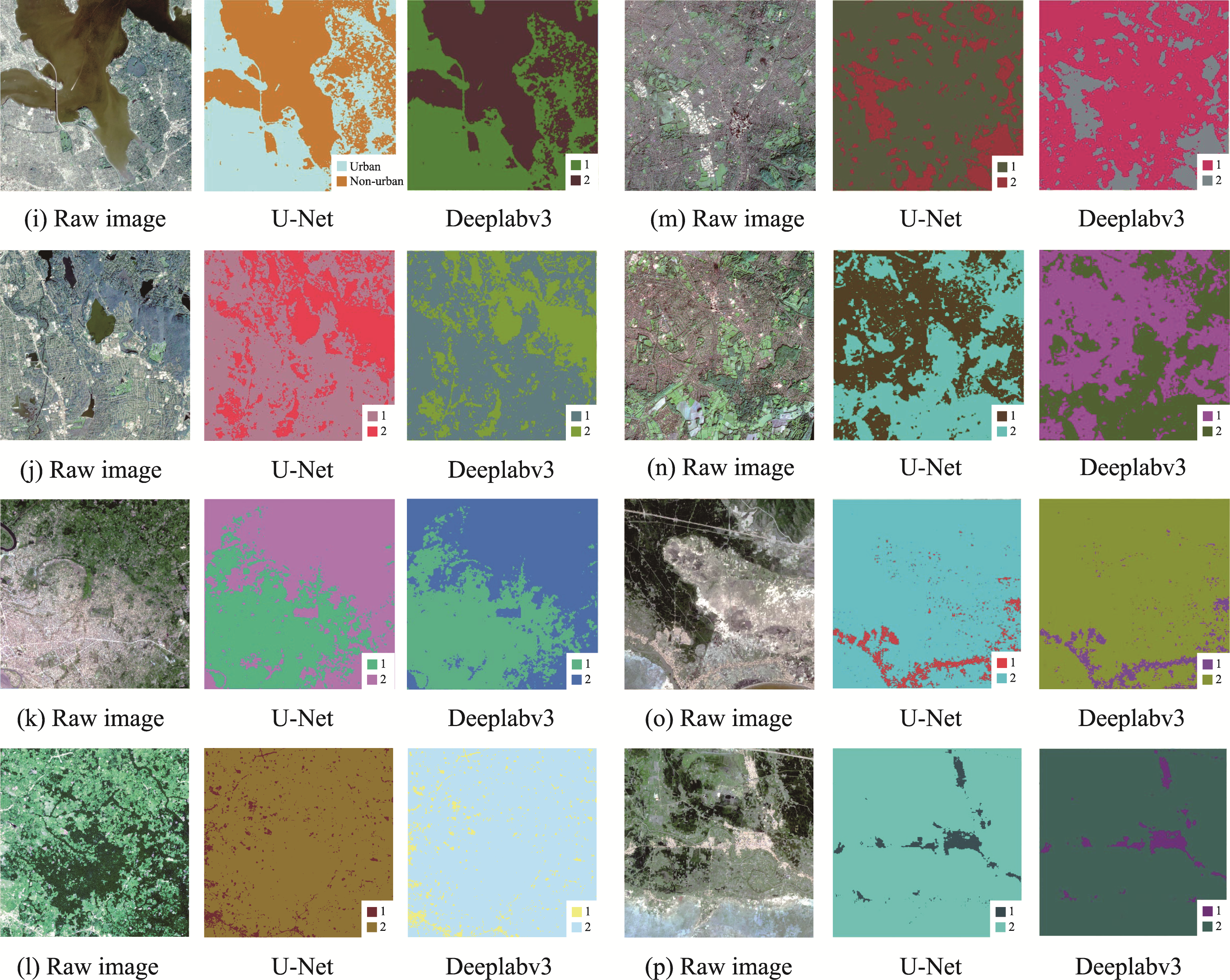
 Figure 16 a to h images of UF extraction results based on two deep learning algorithms. Among them, Image a and b are from Beijing, China, c and d are from New Delhi, India, e and f are from Mansouria, Egypt, and g and h are from Porto Alegre, Brazil. In the legend, 1 represents urban areas and 2 represents non-urban areas.
Figure 16 a to h images of UF extraction results based on two deep learning algorithms. Among them, Image a and b are from Beijing, China, c and d are from New Delhi, India, e and f are from Mansouria, Egypt, and g and h are from Porto Alegre, Brazil. In the legend, 1 represents urban areas and 2 represents non-urban areas.
 Figure 17 The results of UF extraction based on two deep learning algorithms, are presented for images i through p. Among them, Images i and j are from New York, USA, k and l from Kisangani, Sudan, m and n from London, UK, o and p from Phan Thiet, Vietnam. In the legend, 1 represents urban areas and 2 represents non-urban areas.
Figure 17 The results of UF extraction based on two deep learning algorithms, are presented for images i through p. Among them, Images i and j are from New York, USA, k and l from Kisangani, Sudan, m and n from London, UK, o and p from Phan Thiet, Vietnam. In the legend, 1 represents urban areas and 2 represents non-urban areas.
 Figure 19 SAM-based UF extraction result diagrams, the extracted urban areas show the original colour that distinguishes them from non-urban areas, with a blue border distinguishing the two types of environments. Among them, Images a and b are from Beijing, China, c and d are from New Delhi, India, e and f are from Mansouria, Egypt, and g and h are from Porto Alegre, Brazil. In the legend, i and j from New York, USA, k and l from Kisangani, Sudan, m and n from London, UK, o and p from Phan Thiet, Vietnam.
Figure 19 SAM-based UF extraction result diagrams, the extracted urban areas show the original colour that distinguishes them from non-urban areas, with a blue border distinguishing the two types of environments. Among them, Images a and b are from Beijing, China, c and d are from New Delhi, India, e and f are from Mansouria, Egypt, and g and h are from Porto Alegre, Brazil. In the legend, i and j from New York, USA, k and l from Kisangani, Sudan, m and n from London, UK, o and p from Phan Thiet, Vietnam.